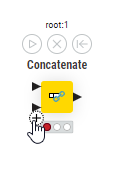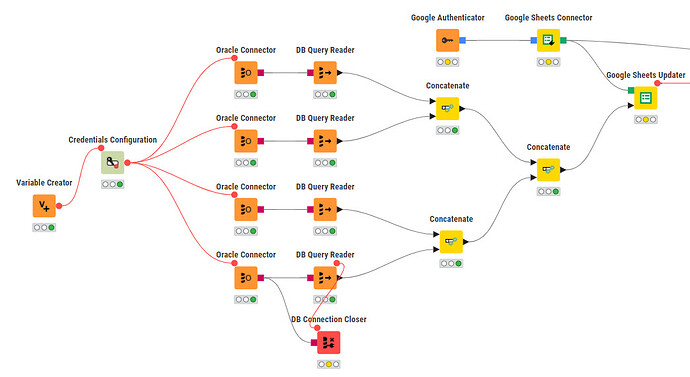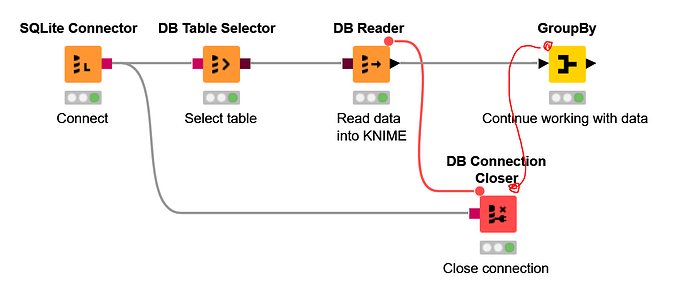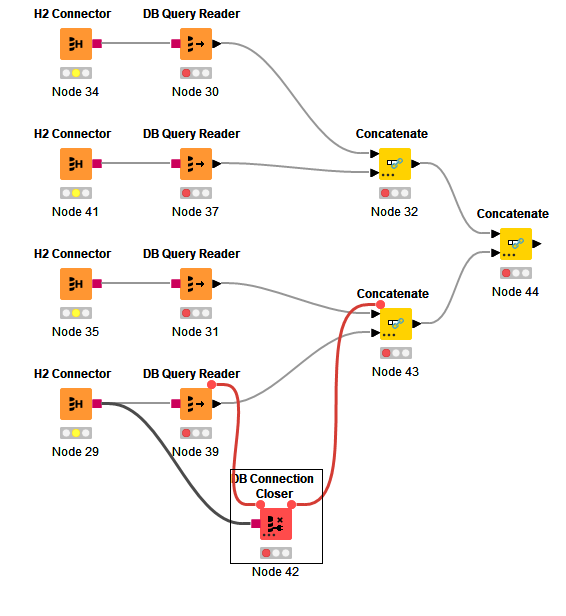Hi @Mark_White , welcome to the KNIME community forum.
In the example flow that you referenced, this would close the connection as it suggests, but possibly only if (all) the workflow nodes were selected using “select all” and then executing. With no node downstream of the connection closer attempting to execute, there is nothing to force the connection closer itself to execute which is what you are finding.
Technically, to force the DB Connection Closer to execute, the demo workflow would be coded as:
So, in your workflow, to force the execution the DB Connection Closer node in this way, you can attach its “downstream” flow port to another node that will be executed:
e.g. I’ve mocked it up using an H2 database in place of Oracle:
But… this would only have the effect of closing the last of your 4 db connections, leaving the other 3 sessions open, until such time as either the DB Connector node is reset, or the connection expires/network is chopped etc.
Is this what you intend?
To close all of the sessions, you’d need to do similar for each of them.
Some other observations…
Firstly, you are chaining the Concatenate node. It’s not that obvious, but you don’t need to. In “modern UI”, which is what I think you are using, you can hover the mouse over the input data ports of the Concatenate node and then click the “+” that appears, to add further input ports.

Add as many as you need.
(In “Classic UI” which is what my screenshots are from, you can click the three dots on the Concatenate node and you can add extra ports):
If you want to close all of the connections, you could do something like this (which I admit looks a bit busy  )
)
You could also have all the queries execute in sequence from the same database connection, but this depends on whether you are intentionally wanting to execute them in parallel which is what you have at the moment. Maybe it’s for improved performance and you don’t mind having additional sessions open.
For example, here the flow variables from one Query Reader to the next ensures the sequence of execution of the queries. (As the DB Connection Closer is free to execute as soon as the 4th DB Query Reader has completed, we don’t want that query completing ahead of one of the others!)
A final observation (and this depends on whether the queries are all actually “union compatible” with each other (i.e. do they all return the same set of columns) is that if what you are doing is reading data from the same database and simply concatenating the result, this might be better done within the database, in which case you could swap the DB Query Reader nodes with “in database” nodes as follows:
In this example, you could put the queries from each of the DB Query Reader nodes as “custom queries” in the DB Table Selector nodes. The DB Concatenate will form a “union” in the SQL sent to the database and the DB Reader will extract the result. This then becomes a single database query with the database performing the heavy lifting of the data concatenation. Again, the DB Connection Closer is wired to occur after the final database action and is forced to execute by being linked to a downstream node.
I hope that helps you with your question, and gives some additional insights.












